All About Balance Exercise and the Different Ways to Practice it

Saravanan "Sharu" Hariram
May 27, 2021

Saravanan "Sharu" Hariram
May 27, 2021
Balance exercises keep our bodies strong and stable. We should practice it along with other forms of exercise to gain maximum benefit. Balance is required for everything we do, including activities such as bending, walking, running, or even getting up from a chair. Hence training for balance will help improve your daily life and also prevent falls and injuries that could happen due to lack of balance.
Any type of activity that keeps you moving can actually help you maintain your balance. Still, it is necessary to perform specific balance exercises that improve your balance.
Though balance exercises help everyone, a few people can benefit more than others. Balance exercises are especially important for older people who have weak muscles. When older individuals perform these exercises regularly, they can strengthen their muscles and avoid falls and injuries. Also, with older people, injuries take time to heal, and recovery is much slower. Hence, strengthening the core, lower back, and leg muscles can help maintain the right balance.
Balance exercises can also be helpful to athletes, who suffer from frequent ankle injuries and ligament issues. Some types of these exercises may also help individuals who suffer from vertigo by minimizing the symptoms. However, you should start the balance exercises slowly and then move on to more repetitions or probably holding on in a specific position for a longer time.
Balance exercises give you a feeling that your limbs are positioned solidly in place; this is called proprioception. It improves your body awareness, which may reduce the likelihood of falls and injuries.
With this exercise, your entire body works together. Hence, practicing these exercises regularly can help keep you coordinated in your everyday life.
Another benefit of balance exercise is improving joint stability. It keeps your hips, shoulders, knees, and ankles stable. When these parts of the body are stable, it can prevent many injuries, including knee problems and ankle issues.
When you practice balance exercises, you can improve your reaction time to a great level. While practicing these exercises, if you suddenly stumble or slip, your body will automatically try to re-balance to avoid falling. Thus, this will improve the reaction time in your daily life as well.
Making balance exercises a part of your exercise routine will help in overall and long-term health. As we get older, our health and balance can sometimes deteriorate, and hence practicing these exercises can keep us strong and healthy throughout.
To practice the different types of balance exercises, you don’t need to do high-intensity or high-impact workouts at all. Most balance exercises are simple movements that can be done standing. Some areas that are targeted when you practice balance exercises are arms, legs, core, back, and glutes.
If you’re looking out to include balance exercises in your daily exercise routine, here are six types of balance exercises you can start with:
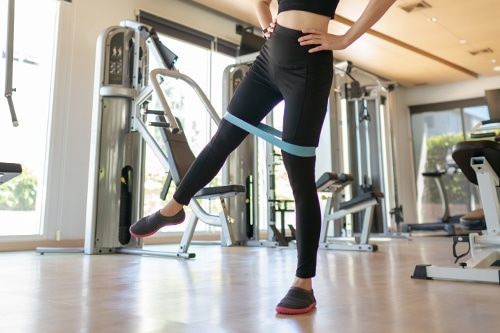
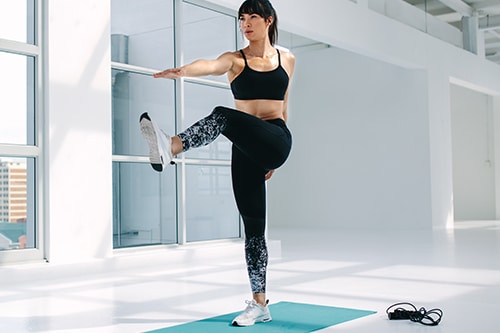
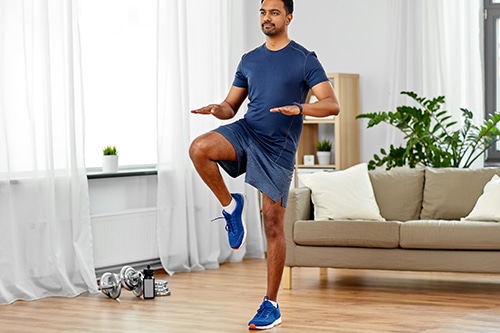
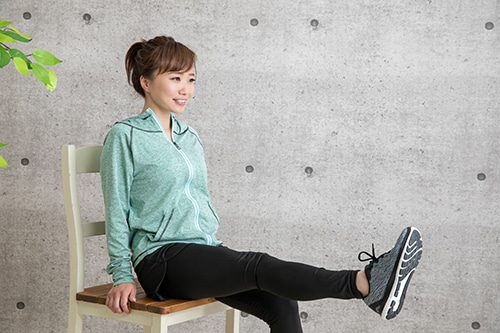
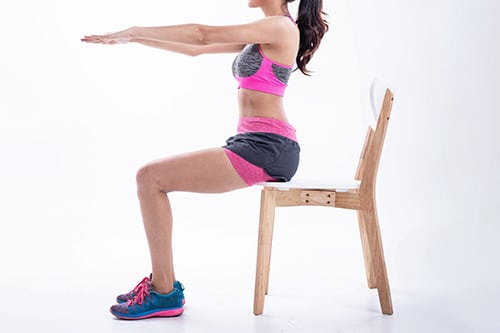
These are the different balance exercises you can practice right away. It’s also important to note that balance varies daily, and some days you may feel more stable than other days. At first, these exercises can be quite challenging for many, but you can master these exercises easily with regular practice.
When practicing balance exercises, try to enjoy the workout and find new creative ways to make it fun and interesting so that it doesn’t get boring.
If you are someone who suffers from medical conditions or recovering from an injury. It’s important to check with your doctor before you begin any type of exercise routine.
A. You can practice balance exercises daily or as often as you like. Older individuals who are at a higher risk of falls should try to do these exercises at least three or more days a week. They should do a set of these exercises that are specially designed to reduce falls. Tai chi is a form of a balance exercise that may help to prevent falls. You can also combine strength, flexibility, and balance exercises for better results.
A. Many people are afraid to do any type of physical activity after a stroke or a heart attack. But it’s important to note that regular physical movement is vital to reduce the chances of suffering another heart attack or stroke. However, every condition is different, and hence it’s important to talk to your doctor before starting with any exercise routine.
A. No. Unlike the strength and cardiovascular exercises that are difficult and taxing on the body, balance exercises are simple to do. Balance exercises are designed to train the brain to work together and coordinate with your muscles. Balance exercises help to keep your brain alert. Hence, you can practice these exercises within the comfort of your home without feeling tired.


Thanks lot for wonderful article